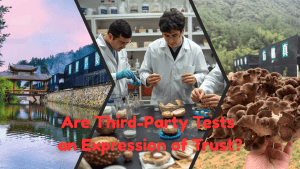Cordycepin, a remarkable metabolite derived from Cordyceps fungi, has emerged as a promising natural compound with diverse therapeutic potential. This unique molecule, structurally similar to adenosine, has captured the attention of researchers for its wide-ranging pharmacological activities and significance.
Cordyceps fungi have been valued in Traditional Chinese Medicine for centuries. They boost stamina, enhance immunity, and treat various ailments.
Modern scientific research has identified cordycepin as an essential ingredient for many of these traditional benefits. Impressive Therapeutic Potential
Anti-Cancer Properties
Cordycepin has demonstrated the ability to inhibit the growth of various cancer cells, including breast, lung, and liver cancers
- It works by Inducing apoptosis in cancer cells
- Interfering with cancer cell proliferation
- Disrupting key signaling pathways essential for tumor growth
- Blocking angiogenesis, effectively starving tumors of nutrients
Anti-Inflammatory Effects
- Cordycepin shows promise in managing chronic inflammatory conditions by inhibiting pro-inflammatory cytokines like TNF-α, IL-6, and IL-1β
- Acting as a natural inhibitor of NF-κB, a key regulator of inflammatory responses
Antiviral Potential
Research has revealed cordycepin’s antiviral properties against various viruses, including influenza, herpes simplex, and HIV.
Its mechanism involves inhibiting viral replication by interfering with viral RNA synthesis. Immunomodulatory Benefits
- Cordycepin exhibits a unique dual regulatory function on the immune system: It can help reduce hyperactivity in autoimmune conditions
- It can stimulate immune activity in cases of weakened immunity
Neuroprotective Effects
Recent studies suggest cordycepin may have neuroprotective properties, potentially benefiting conditions like Alzheimer’s and Parkinson’s.
Molecular Mechanisms
- Cordycepin’s therapeutic effects are primarily attributed to two fundamental mechanisms: Inhibition of mRNA polyadenylation, which disrupts protein synthesis in target cells
- Activation of the AMPK pathway, enhancing cellular energy regulation
Cordyceps sinensis vs. Cordyceps militaris
While both Cordyceps sinensis and Cordyceps militaris contain cordycepin, there are notable differences between the two:
Cordyceps Sinensis
- Natural habitat: High-altitude regions of the Tibetan Plateau and Himalayas
- Rarity: Extremely rare and expensive due to limited natural occurrence
- Traditional use: Highly prized in Traditional Chinese Medicine
- Cultivation: Difficult to cultivate artificially, leading to scarcity
- Commercially produced in mycelium-liquid fermentation
Cordyceps militaris
- Natural habitat: Found in various regions worldwide
- Availability: More abundant and more accessible to cultivate commercially
- Active compounds: Contains higher levels of cordycepin than C. sinensis
- Modern use: Increasingly used in supplements and research due to easier cultivation
These differences have led to C. militaris becoming more prevalent in the supplement market and scientific research, while C. sinensis remains highly valued for its traditional use but is less common in commercial products due to its scarcity and high cost. As research continues to uncover cordycepin’s full potential, this fascinating fungal compound may play a crucial role in developing innovative treatments for some of our most challenging health conditions.
References:
1. Tuli, H. S., Sharma, A. K., Sandhu, S. S., & Kashyap, D. (2013). Cordycepin: a bioactive metabolite with therapeutic potential. Life Sciences, 93(23), 863-869.
2. Ng, T. B., & Wang, H. X. (2005). Pharmacological actions of Cordyceps, a prized folk medicine. Journal of Pharmacy and Pharmacology, 57(12), 1509-1519.
3. Yue, K., Ye, M., Zhou, Z., Sun, W., & Lin, X. (2013). The genus Cordyceps: a chemical and pharmacological review. Journal of Pharmacy and Pharmacology, 65(4), 474-493.
4. Jeong, J. W., Jin, C. Y., Kim, G. Y., Lee, J. D., Park, C., Kim, G. D., … & Choi, Y. H. (2010). Anti-inflammatory effects of cordycepin via suppression of inflammatory mediators in BV2 microglial cells. International Immunopharmacology, 10(12), 1580-1586.
5. Nakamura, K., Yoshikawa, N., Yamaguchi, Y., Kagota, S., Shinozuka, K., & Kunitomo, M. (2006). The antitumor effect of cordycepin (3′-deoxyadenosine) on mouse melanoma and lung carcinoma cells involves adenosine A3 receptor stimulation. Anticancer Research, 26(1A), 43-47.
6. Kondrashov, A., Meijer, H. A., Barthet-Barateig, A., Parker, H. N., Khurshid, A., Tessier, S., … & de Moor, C. H. (2012). Inhibition of polyadenylation reduces inflammatory gene induction. RNA, 18(12), 2236-2250.
7. Cheng, Z., He, W., Zhou, X., Lv, Q., Xu, X., Yang, S., … & Guo, L. (2011). Cordycepin protects against cerebral ischemia/reperfusion injury in vivo and in vitro. European Journal of Pharmacology, 664(1-3), 20-28.
8. Cui, Z. Y., Park, S. J., Jo, E., Hwang, I. H., Lee, K. B., Kim, S. W., … & Hong, S. H. (2018). Cordycepin induces apoptosis of human ovarian cancer cells by inhibiting the CCL5-mediated Akt/NF-κB signaling pathway. Cell Death Discovery, 4(1), 1-12.
9. Jin, Y., Meng, X., Qiu, Z., Su, Y., Yu, P., & Qu, P. (2018). Anti-tumor and anti-metastatic roles of cordycepin, one bioactive compound of Cordyceps militaris. Saudi Journal of Biological Sciences, 25(5), 991-995.
10. Ahn, H.Y.; Cho, H.D.; Cho, Y.S. Antioxidant and antihyperlipidemic effects of cordycepin-rich Cordyceps militaris in a Sprague-Dawley rat model of alcohol-induced hyperlipidemia and oxidative stress. Bioresour. Bioprocess. 2020, 7, 104846.











